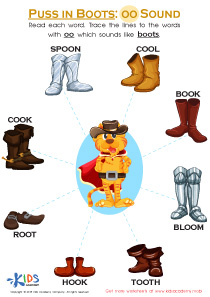Normal Middle Vowel Worksheets for Ages 3-8
4 filtered results
-
From - To
Explore our engaging Middle Vowel Worksheets tailored for children ages 3-8! These worksheets are designed to enhance phonemic awareness and reading skills, focusing on identifying and practicing normal middle vowels. Each activity is fun and interactive, making learning enjoyable for young learners. Perfect for parents and educators, our resources help build a strong foundation in literacy by providing various exercises that cater to different learning styles. From filling in the blanks to matching activities, kids will gain confidence and improve their language skills while discovering the excitement of learning vowels. Download and print these worksheets today for a playful educational experience!
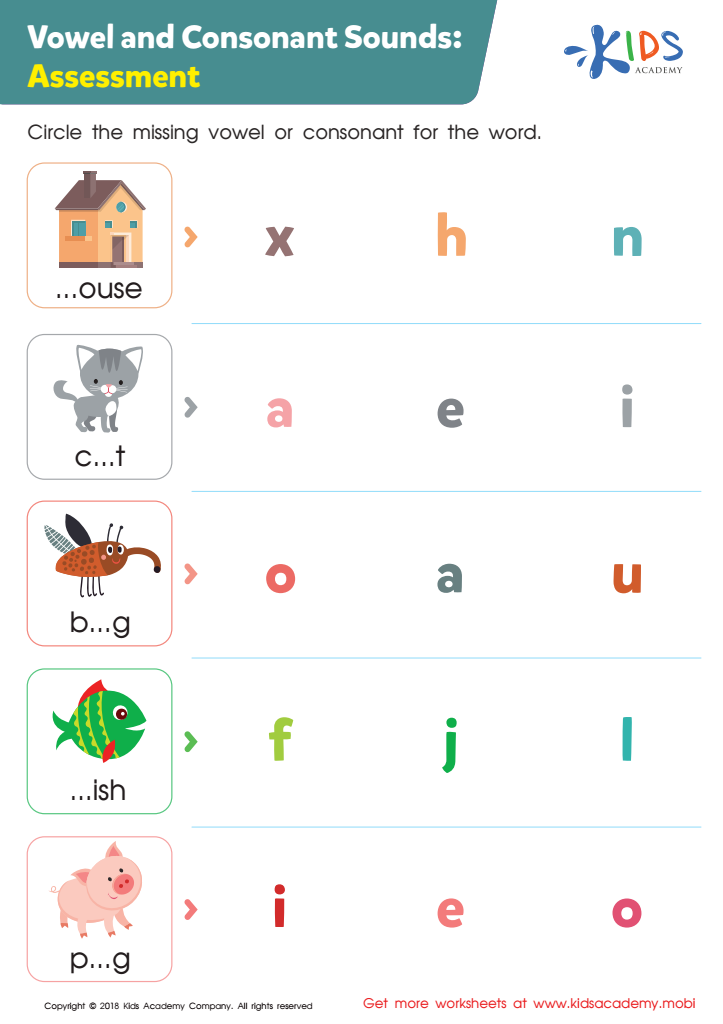

Vowel and Consonant Sounds: Assessment Worksheet
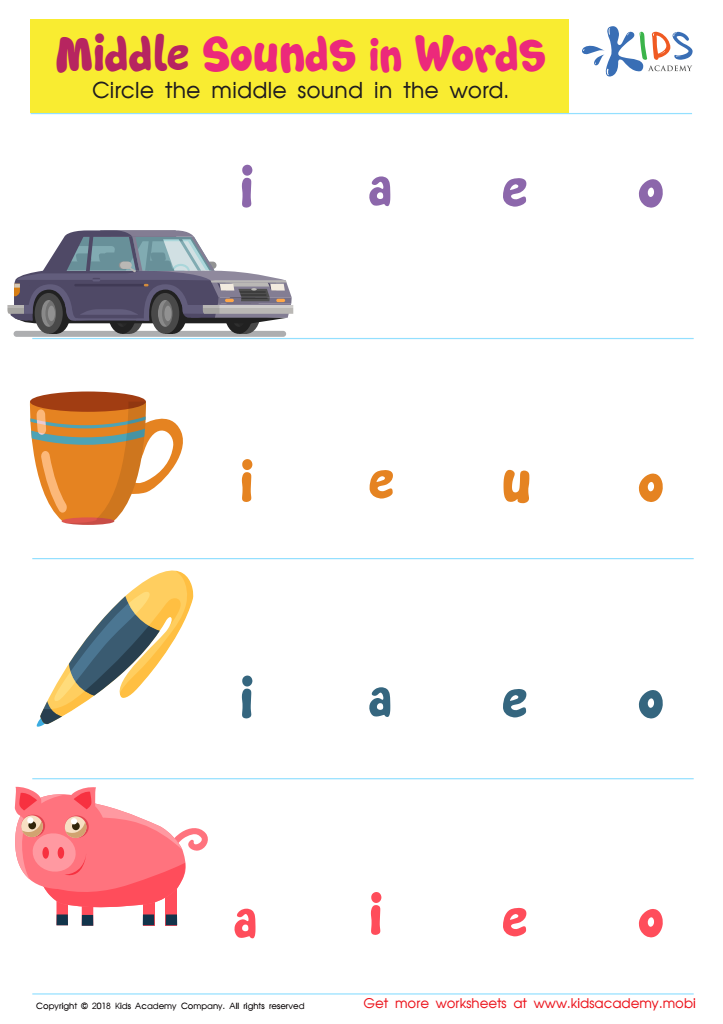

Middle Sounds in Words Worksheet
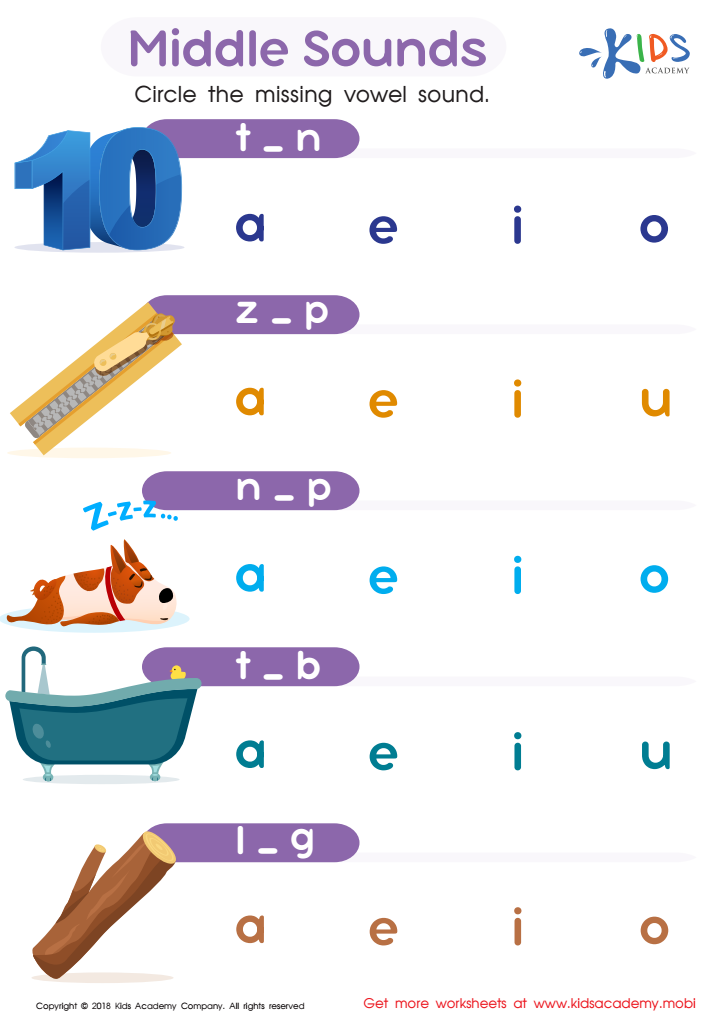

Middle Sounds Worksheet
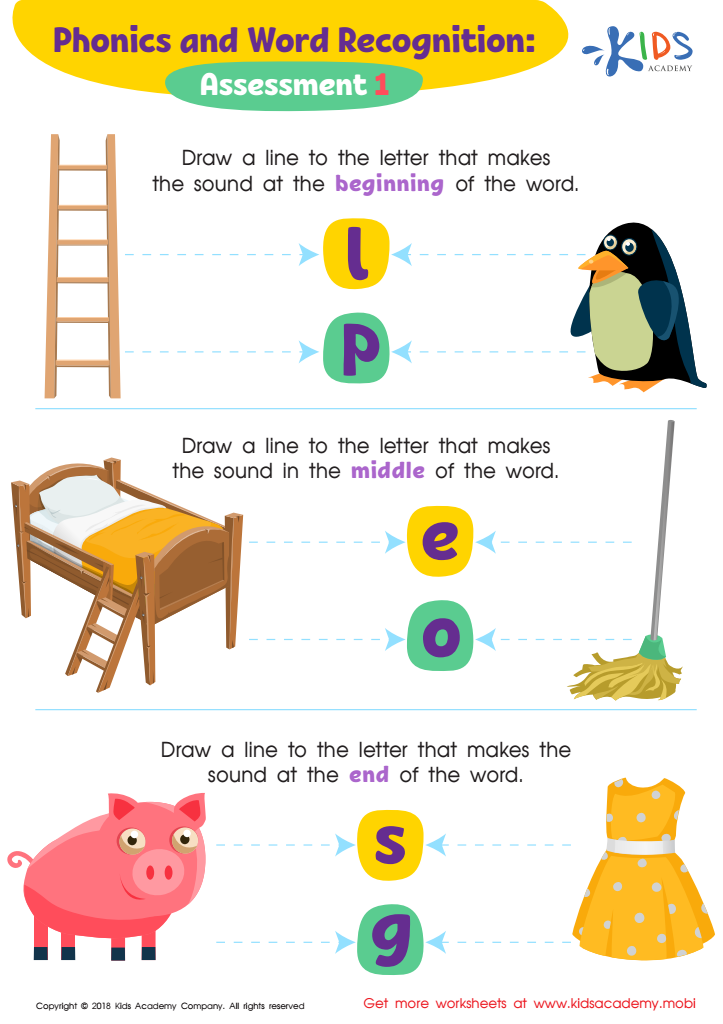

Phonics and Word Recognition: Assessment 1 ELA Worksheet
Normal Middle Vowels, often referred to as short vowels, play a crucial role in the literacy development of children aged 3-8. Understanding and mastering these sounds is essential for early reading and writing skills. Short vowels such as /a/, /e/, /i/, /o/, and /u/ form the backbone of many words and influence how children decode and spell them.
For parents and teachers, emphasizing the importance of normal middle vowels fosters foundational literacy skills. Children who grasp these sounds can better segment words, aiding in phonemic awareness—a key predictor of reading success. Engaging with short vowels through playful activities, songs, and rhymes makes learning enjoyable and encourages exploration of language.
Additionally, the knowledge of these sounds enhances a child's ability to read fluently and with comprehension. Recognizing that short vowels can change the meaning of words, such as "bat" versus "bet," showcases their significance in language development.
By actively nurturing an understanding of normal middle vowels, educators and parents empower children to confidently approach reading and writing. This vital focus not only boosts academic performance but also nurtures a lifelong love for language, laying the groundwork for effective communication skills in the future.

 Assign to My Students
Assign to My Students










